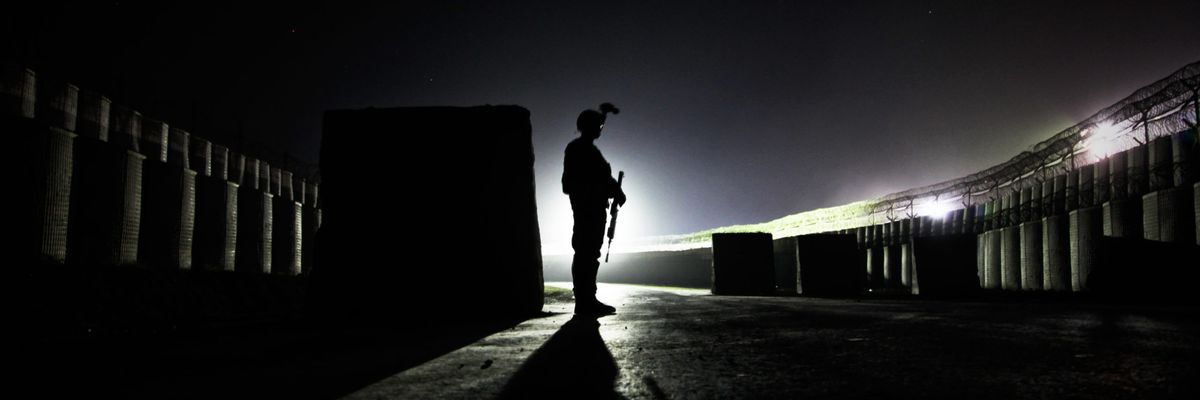The Biden administration is planning to keep U.S. forces in Afghanistan past an agreed-upon May 1 deadline to withdraw, the chairman of the House Armed Services Committee said Wednesday to a panel hosted by Foreign Policy.
“It’s a general feeling that May 1 is too soon, just logistically,” Rep. Adam Smith (D–Wash.) claimed, citing conversations with administration officials. “You cannot pull out ten thousand plus troops in any sort of reasonable way in just six weeks.”
Under the terms of the Doha Agreement signed with the Taliban in February 2020, the United States is obligated to pull its forces out of Afghanistan by May 1 this year. Smith said that the Biden administration wants to “negotiate past May 1” in order to explore its options.
“Job one is to try to get back in to talk to the Taliban about at least giving us more time,” he added.
“It is a purely logistical argument,” Smith clarified in response to an audience question, noting that he thinks “the Biden administration is skeptical” that the Taliban or a future Afghan unity government “could be comfortable with our presence” in the long run.
There are roughly 3,500 U.S. troops and 7,000 allied forces in Afghanistan as part of the mission to shore up the U.S.-backed Afghan government against Islamist rebels. Last week, it was revealed that the U.S. government had been undercounting its troop presence by about 1,000 service members.
After helping the Afghan government fight the Taliban for nearly two decades, the United States opened a peace process with the rebel group in 2018. The Taliban agreed in 2020 to cease attacks on foreign forces in exchange for a full withdrawal — a bargain the rebels have held up — and U.S. forces have even begun to partner with the Taliban against the Islamic State.
There have been no U.S. combat deaths in Afghanistan since the agreement was signed. Experts warn that the Taliban could go on an “all-out offensive” against foreign troops if the United States breaks its end of the deal.
Laurel Miller, director of the Asia program at the International Crisis Group, told Wednesday’s panel that “you can’t roll back the clock to the time before the Doha agreement…just because someone wants something better.”
The intra-Afghan peace process has not gone so smoothly, as the Taliban ramps up its attacks on pro-government forces. The Biden administration has now begun a diplomatic blitz to try to resolve the Afghan civil war.
“Afghanistan is likely to spiral into more violence,” Quincy Institute executive vice president Trita Parsi and senior fellow Adam Weinstein argued in a Tuesday op-ed. “President Biden must accept the logical conclusion of this reality: The only variable he can control is whether American soldiers will be the target of that violence or be safe at home with their families.”
Lisa Curtis, director of the Indo-Pacific Security Program at the Center for a New American Security, told the Wednesday panel that “the risks are simply too high to go to zero troops.”
“The Taliban would be able to retake power in twelve to eighteen months,” she contended. “You would see a convergence of terrorists from around the world in Afghanistan.”
Curtis acknowledged that staying in Afghanistan would expose U.S. forces to attack, but said that the United States “could answer the Taliban in kind.”
Smith, however, argued that “the risk is lower” from terrorism than it was in the 1990s—and that diplomacy was key to fighting the global terrorist threat.
“If you pull out of Afghanistan, it sends the message that you get that” about diplomacy, he said. “In the past twenty years, we have relied too much on the military and too much on thinking that if you kill enough people it will be okay.”
And he was blunt about the risks of breaking from the peace process: “If we are there in large numbers, we are vulnerable...we are going to lose lives.”
















